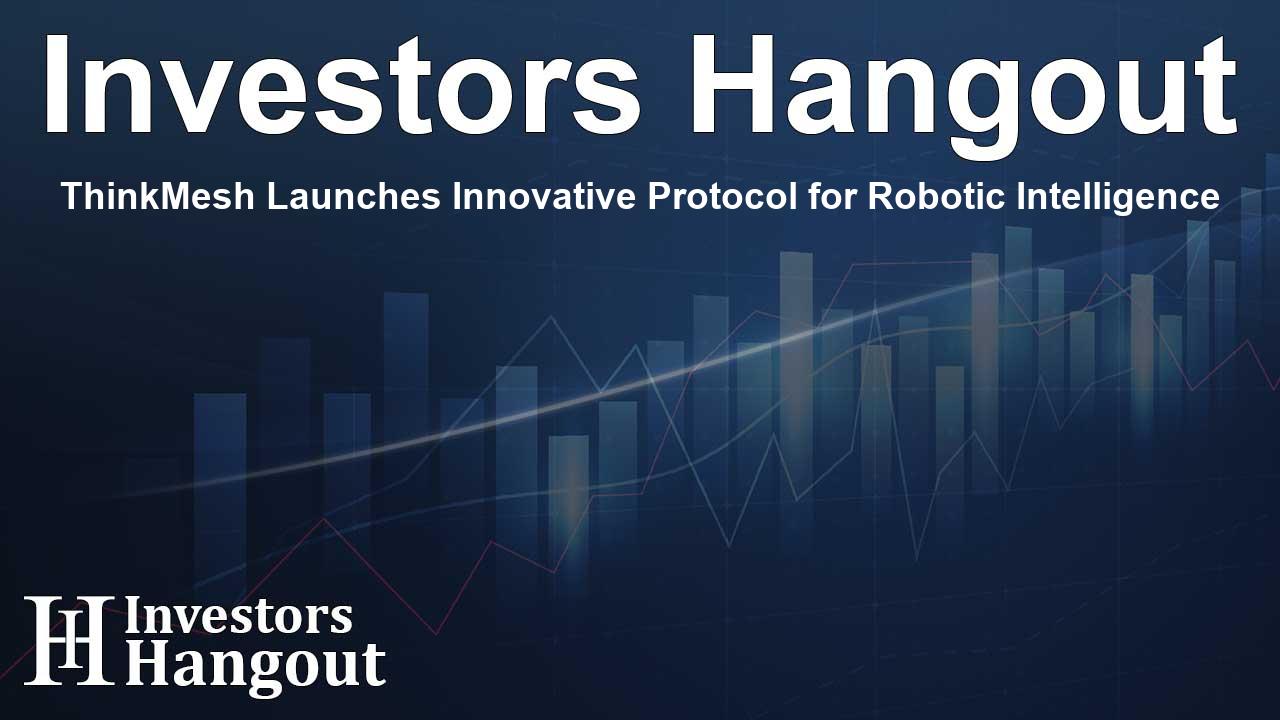ThinkMesh Launches Innovative Protocol for Robotic Intelligence

ThinkMesh Launches Revolutionary Protocol for Robotic Cognition
Robotics is evolving at a breathtaking pace, thanks to innovations like ThinkMesh, which is pioneering a new framework for distributed robotic cognition. This decentralized protocol is embarking on its initial rollout phase, aiming to create modular and economically incentivized intelligence for machines across various sectors.
The main objective of ThinkMesh is to tackle a long-standing challenge in robotics: the lack of cohesive, adaptive intelligence across different devices. With this protocol, robots are now empowered to discover, engage, and reward intelligent software agents in real-time. From automated assembly arms to service robots, these machines are learning from one another, sharing performance benchmarks, and evolving collectively.
Pioneering Solutions for Robotics
Present-day robotic systems are frequently hampered by fragmented control architectures, rigid behavior maps, and detached learning processes. Consequently, the intelligence derived from real-world interactions often fails to manifest as tangible improvements. ThinkMesh aims to revolutionize this paradigm with several groundbreaking features:
- Persistent Digital Identity for each robot
- Agent Registries that enable the discovery and evaluation of modular intelligence
- On-Chain Incentives that reward high-performing developers and validators
- Verifiable Feedback Loops to support real-world evolution as opposed to static solutions
By focusing on protocol-layer infrastructure, ThinkMesh ensures that its solutions are extensible, open, and free from vendor constraints.
Real-World Applications and Impact
Various initial integrations have already commenced, especially within simulated warehouse operations, welding units, and customer service robots. One notable case involved robots across three manufacturing facilities that used ThinkMesh to intelligently select the best welding strategies based on real-world performance, leading to a remarkable 40% reduction in quality variance within just ten days.
Looking ahead, ThinkMesh is set to explore numerous use cases in areas like construction automation, self-driving logistics, and machine-to-machine agreements. This initiative positions robots as independent economic agents, capable of bidding, executing, and validating tasks in shared marketplaces.
Tokenized Intelligence and Governance Structure
Another intriguing aspect of ThinkMesh is its native utility token, which serves as the foundation for its governance framework. Both developers and operators can earn rewards linked to actual performance outcomes. Reputation scores—calibrated through telemetry data, validator reviews, and benchmarking across multiple deployments—essentially dictate agent rankings.
The governance is executed entirely on-chain, employing token-weighted voting and time-locked implementation of proposals. Measures like reputation staking, agent slashing, and validator assessments play a crucial role in ensuring reliability and trust across the network.
Looking Towards the Future
Over the next one to three years, ThinkMesh plans to transition from simulations utilizing technologies such as ROS2 and Gazebo to full-scale, physical applications. Upcoming developments will encompass federated learning, zero-knowledge validations for agents, cross-protocol interoperability (incl. ROS, DDS, OPC-UA), and mechanisms for economic contracts between machines.
As Behzadi asserts, “Robotics has been constrained by outdated architectures. We’re not just enhancing cognitive abilities; we are laying the groundwork for a decentralized economy centered around machines.”
Join the Movement
Interested parties, including developers, robotics laboratories, equipment manufacturers, and protocol innovators, are warmly invited to engage with ThinkMesh.
For more information, you can visit their website or join their communities on Telegram and X (formerly Twitter).
ThinkMesh is eager to collaborate with partners involved in research and simulation for its upcoming protocol initiatives.
Frequently Asked Questions
What is ThinkMesh?
ThinkMesh is a decentralized protocol designed to advance robotic cognition by enabling machines to collaborate and share intelligence dynamically.
How does ThinkMesh improve robotic systems?
ThinkMesh allows robots to learn from real-time feedback, benchmark their performance against one another, and evolve collaboratively rather than remaining static.
What are some key features of ThinkMesh?
Key features include persistent digital identities, agent registries, on-chain incentives, and verifiable feedback loops to foster growth and adaptation.
What applications is ThinkMesh exploring?
ThinkMesh is looking into applications in construction, autonomous logistics, and machine-to-machine interactions, enabling robots to act as independent economic agents.
How can developers get involved with ThinkMesh?
Developers and relevant stakeholders can participate by engaging with ThinkMesh through their website and communities on various social platforms.
About The Author
Contact Logan Wright privately here. Or send an email with ATTN: Logan Wright as the subject to contact@investorshangout.com.
About Investors Hangout
Investors Hangout is a leading online stock forum for financial discussion and learning, offering a wide range of free tools and resources. It draws in traders of all levels, who exchange market knowledge, investigate trading tactics, and keep an eye on industry developments in real time. Featuring financial articles, stock message boards, quotes, charts, company profiles, and live news updates. Through cooperative learning and a wealth of informational resources, it helps users from novices creating their first portfolios to experts honing their techniques. Join Investors Hangout today: https://investorshangout.com/
The content of this article is based on factual, publicly available information and does not represent legal, financial, or investment advice. Investors Hangout does not offer financial advice, and the author is not a licensed financial advisor. Consult a qualified advisor before making any financial or investment decisions based on this article. This article should not be considered advice to purchase, sell, or hold any securities or other investments. If any of the material provided here is inaccurate, please contact us for corrections.
